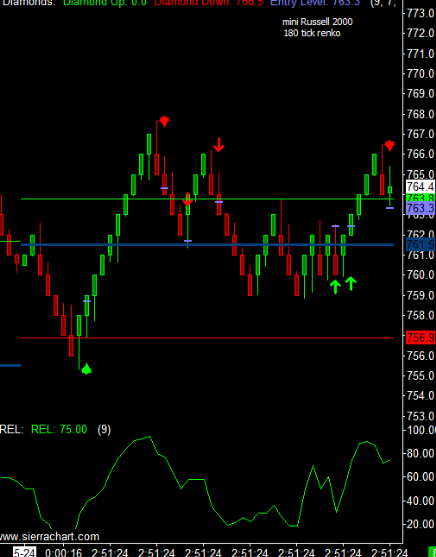In global markets, economic data rarely matches expectations exactly. Deviations between forecasted and actual outcomes—what we call “economic surprises”—often trigger sharp asset price reactions. But what if we could systematically measure these surprises, not just from forecasts but from continuously updated econometric models? That’s where quantamental economic surprise indicators come in. These indicators capture the difference between real-time macro data and modeled expectations and can be transformed into practical trading signals, especially for commodity markets.
Understanding Quantamental Surprises
At their core, quantamental surprises are real-time signals that reflect deviations between actual economic data and predicted values. These predictions are generated through statistical models rather than surveys. Two primary forms of surprise are captured:
- First-print surprises, which occur when a new data point is released. The model predicts the new value, and the surprise is the difference between the actual and expected result.
- Revision surprises, which arise when previously released data is updated. In this case, the surprise is simply the revision itself.
This system allows for a much broader application than traditional surprise indicators that rely on survey expectations. It also captures the full range of developments in economic time series—updates, corrections, and back-revisions—not just first prints.
How Are These Indicators Built?
Quantamental surprise indicators can be derived from many types of economic data, including industrial output, business sentiment, and construction confidence. In practice, predictions are often based on autoregressive models like ARMA(1,1), which forecast future data points using prior values and error terms. These models are trained sequentially, adjusting with each new data release or revision.
To illustrate: suppose industrial production for February is released on March 25. The model estimates February’s production based on historical patterns. Once the actual figure is available, the model’s forecast is compared to reality, and the gap becomes the “surprise.” If a revision to January’s data is made in April, that revision itself is recorded as another surprise.
Advantages Over Survey-Based Surprise Indicators
Traditional surprise metrics, such as those used by major banks or data providers, are tied to economist forecasts and scheduled data releases. In contrast, quantamental surprises:
- Rely on continuously updated statistical models, not static survey estimates.
- Apply to a broader set of data points, including lesser-known indicators and unscheduled revisions.
- Capture more subtle economic shifts, including base effects and seasonal distortions.
- Provide a more consistent and customizable basis for strategy development.
This flexibility makes quantamental surprises particularly valuable for investment strategies that depend on granular, high-frequency insights.
Example: Surprises in Global Industry and Construction
To demonstrate their practical use, consider quantamental indicators measuring global industrial and construction activity. Surprises are calculated using three main components:
- Industrial production — assessed through various growth metrics.
- Manufacturing confidence — measured through business sentiment surveys and changes over recent months.
- Construction sentiment — based on similarly structured confidence scores.
These indicators cover a wide array of economies, with data normalized and standardized for cross-country comparison. Surprises are winsorized to limit outliers and annualized for consistency across datasets of different frequencies.
From Data to Signal: Aggregation Steps
To convert surprises into tradeable signals, several aggregation steps are used:
- Conceptual aggregation groups different versions of the same economic indicator (e.g., various growth rates of industrial production).
- Temporal aggregation smooths signals over time using moving averages with short half-lives (e.g., 3 to 5 days).
- Geographic aggregation combines country-level surprises into global indicators using industrial value-added as weights.
- Final aggregation merges the key concepts—industrial production, manufacturing, and construction—into a single composite surprise score.
These steps help reveal broader trends and reduce signal noise, creating a more stable basis for trading.
Trading Strategy: Industrial Commodities
The clearest application of these indicators is in trading industrial commodity futures. The hypothesis is straightforward: positive economic surprises in industry and construction should anticipate upward revisions in commodity demand forecasts, leading to higher futures prices.
The strategy involves a risk-weighted basket of futures contracts for metals, oil, and refined products. Positions are adjusted daily based on the size and direction of the global economic surprise signal. Over the past two decades, this approach has delivered compelling results:
- Sharpe ratios have averaged around 0.7, with Sortino ratios exceeding 1.0.
- The strategy has shown minimal correlation to equities (slightly negative), making it a potential diversifier.
- Performance has been highly seasonal, with the majority of gains concentrated in recession and recovery periods.
Why It Works
Surprises lead market narratives. They represent new, unexpected information that reshapes forecasts and pricing models. In particular, commodity markets, which respond quickly to changes in perceived demand, are especially sensitive to these signals. This is why trading on quantamental surprises often outperforms strategies based solely on observed economic conditions or lagging indicators.
Conclusion
Quantamental surprise indicators provide a powerful framework for capturing shifts in economic momentum. Unlike survey-based surprises, they offer broader coverage, better consistency, and deeper integration with systematic models. When aggregated thoughtfully and applied to assets like industrial commodities, these indicators can translate into effective, risk-adjusted alpha—especially during periods of macroeconomic turbulence. For traders and asset managers seeking sharper tools to navigate global cycles, these signals offer a practical edge.
